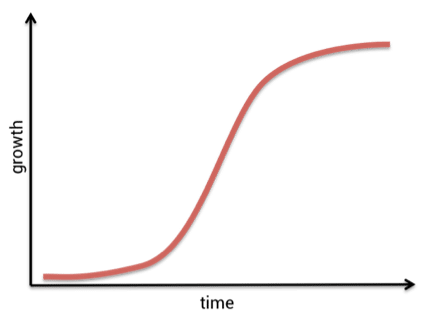Traditional leadership development training needs to be re-evaluated
Today’s rapidly changing and digitalized work environment requires more than ever before leaders who know who they are, what they stand for, can lead with purpose and impact, and are resilient. In a world which is highly dynamic and uncertain, leadership helps followers stay focused, work toward a common goal, provide a sense of belonging and security, and achieve high-performance.
With so much change and disruption, how can the function of leadership remain relevant?
As a leader, aligning yourself with the environment you’re working in has been seen as a key pillar of leadership effectiveness. However, with so much change and disruption currently taking place, how can alignment still be achieved and how can the function of leadership remain relevant?
This article will discuss a new perspective to leadership development which is more relevant to today’s changing nature of work and provide a framework for effective leadership development in 21st-century business.
60 years of leadership research shows it’s all about the individual
For many years, the topic of leadership has received a lot of attention from the scientific community. In the past 60 years, more than 2000 studies have been conducted aimed at determining an absolute leadership style, personality traits and behaviors of great leaders. None of these studies has been successful in producing a clear profile of the perfect leader. The reason for this is that leaders are complex human beings with a multitude of life experiences, characteristics, and mindsets.
More than 2000 studies have been conducted aimed at determining the personality traits and behaviors of great leaders.
One of the key paradigms in leadership development has been the focus on understanding who you are as an individual, how your story has made you the person you are today, exploring your unique strengths, your passions and goals to align yourself with an environment where your ‘unique blueprint’ would have the best fit and biggest impact.
In social psychology, this is otherwise known as identifying P-E Fit, or person to environment fit. Dr. Kurt Lewin, a pioneer in social psychology, developed a simple equation to explain how behavior is actually a function of the person’s interaction with his or her environment: B = f(P x E). Leadership effectiveness is thus context-dependent from both the leader’s perspective as well as from the perspective of the environment.


Why leadership development is different in the 21st century
While developing a strong sense of self is still core to developing your authentic leadership style, it is becoming increasingly difficult to align oneself with an environment which is in continuous flux. This requires an agile mindset together with an ability to reinvent oneself to adapt to new circumstances rapidly.
S-Curves
S-curves reflect a natural growth cycle common to human systems, organizational systems, and political systems to name a few: starting up, learning, flourishing, and eventually declining. The S-curve is also a term used in innovation and entrepreneurship to reflect the exponential growth digital technologies and digital solutions both go through after a significant learning curve of finding product-market fit and quality improvement.
An environment which is in continuous flux requires an agile mindset and an ability to adapt to new circumstances rapidly.
Different than traditional growth curves or life cycles, which reflect linear growth trajectories, S-curves reflect exponential growth with deep but short learning periods and sharp maturity cycles which lead to rapid decline. An S-curve is often referred to as the hockey stick model which reflects the initial stages of innovation using design thinking and other lean methodologies to grow exponentially over time.


A new leadership development model to empower you
Traditional leadership development models fall short of reflecting leadership development in 21st-century business. Based on this shortcoming, I have developed a new framework to make leadership development training effective in a modern-day business environment: The S-Curve Framework for Leadership Development.
This is an effective tool to help you discover your authentic leadership and empower you to lead, whatever your position in your company, whilst remaining true to who you are. It is also a tool to help you stay relevant and build the behavioral and psychological skills required to be responsive, agile, creative and assertive in a rapidly changing environment.
Used optimally, your “S-CURVE Framework for Leadership Development”[1] document acts as a dynamic “living” plan that you update on a regular basis throughout your career to reflect your leadership experiences and changes in your thinking about your development. As a consequence, this document will guide you to successfully stay on track as a leader, professionally and personally, in alignment with what is most important to.
S-CURVE Framework
Leadership development using the S-Curve Framework focuses on key areas of personal leadership development which will enable you to lead yourself and others with authenticity, purpose, and impact in today’s rapidly changing environment. Besides the original meaning of the word, the S-Curve framework I developed is a model which reflects the six core areas of personal development.
Using the S-Curve Framework for Leadership Development will help your become a leader of personal disruption.
S-CURVE = Strategic Life Planning – (Creativity, Unique Self, Resilience, Values, and Experimentation)
S = Strategic Life Planning
- The S stands for Strategic Life Planning and reflects the conscious and effortful process of identifying your purpose and calling (your vision and mission) and aligning your true-self with the personal and professional ambitions you have in mind.
C = Creativity
- The C stands for Creativity and Innovation. Creativity reflects your ability to apply design thinking and lean methodologies to your personal leadership development to help you visualize a desired future and attain your short- and long-term goals.
U = Unique Self
- The U reflects your Authentic Self. It reflects your life story, your personal characteristics, personality, strengths, developmental areas, motivations, fears, and areas of influence. To understand your unique self, you need to interact with others, be open for feedback, and embark on a journey of continuous self-reflection.
R = Resilience
- The R reflects the ability to lead oneself and others in a fast-moving environment. It reflects the behavioral and psychological skills required to attract, connect and engage people in today’s changing nature of work. Resilience also reflects the mental toughness required to deal with life’s daily stressors.
V = Values
- The V stands for Core Values. A core part of developing your authentic voice and leadership style is through the process of aligning your core values with your immediate and future environment. Which values do you feel most passionate about? How aligned are you with your core values and to which extent do your behaviors reflect your values?
E = Experimentation
- The E stands for Experimentation and Execution and reflects the actions needed to realize your strategic life plan. How will you make your goals attainable and which steps do you need to take to ensure you are heading in the right direction? Developing an experimental mindset will help you succeed in a fast-moving environment as past results are no longer an indicator of future success.
Using the S-Curve Framework for Leadership Development will help your become a leader of personal disruption while inspiring performance and helping others head into a common direction.
[1] Developed by LEAD TCM&L™, a trademarked company specialized in behavioral science and leadership development.
Grow your leadership capabilities with an MBA in international business at Hult. To learn more, take a look at our blog Why soft skills are important for global leadership, or give your career a boost with our Masters in International Business. Download a brochure or get in touch today to find out how Hult can help you to learn about the business world, the future, and yourself.


